Related Research Articles

William de Braose, 3rd Lord of Bramber was a 12th-century Marcher lord who secured a foundation for the dominant position later held by the Braose family in the Welsh Marches. In addition to the family's English holdings in Sussex and Devon, William had inherited Radnor and Builth, in Wales, from his father Philip. By his marriage he increased the Braose Welsh holdings to include Brecon and Abergavenny.
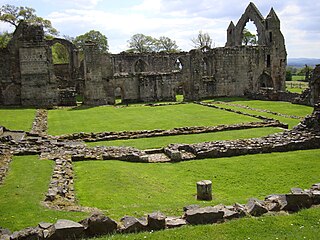
Haughmond Abbey is a ruined, medieval, Augustinian monastery a few miles from Shrewsbury, England. It was probably founded in the early 12th century and was closely associated with the FitzAlan family, who became Earls of Arundel, and some of their wealthier vassals and allies. It was a substantial, successful and wealthy house for most of its four centuries, although evidence of abuses appeared before its dissolution in 1539. The buildings fell into disrepair and the church was largely destroyed, although the remains of some of the domestic buildings remain impressive. The site is now in the care of English Heritage and is open to the public throughout the year and free entry.
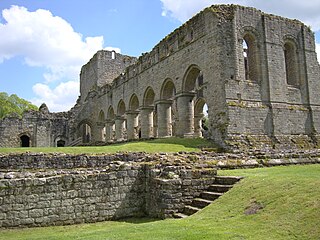
Buildwas Abbey was a Cistercian monastery located on the banks of the River Severn, at Buildwas in Shropshire, England - today about 2 miles (3.2 km) west of Ironbridge. Founded by the local bishop in 1135, it was sparsely endowed at the outset but enjoyed several periods of growth and increasing wealth: notably under Abbot Ranulf in the second half of the 12th century and again from the mid-13th century, when large numbers of acquisitions were made from the local landed gentry. Abbots were regularly used as agents by Plantagenet in their attempts to subdue Ireland and Wales and the abbey acquired a daughter house in each country.
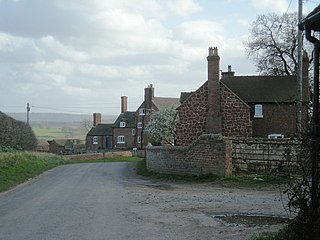
Eyton on Severn is a small village in the English county of Shropshire, east of Shrewsbury. It is located on a ridge above the northern bank of the River Severn. The significant tributary of the Cound Brook joins the Severn at Eyton, albeit on the opposite bank. Wroxeter, the village located at a ruined Roman city, is only a mile north-west of the village. The hamlet of Dryton is just east of Eyton. All lie in the parish of Wroxeter and Uppington.

Erbistock is a village and community in Wrexham County Borough, Wales. The village lies on the banks of the River Dee.
Walter de Clifford (1113–1190) was an Anglo-Norman Marcher Lord of Bronllys Castle on the Welsh border, and was feudal baron of Clifford, seated at Clifford Castle in Herefordshire.
Roger of Worcester was Bishop of Worcester from 1163 to 1179. He had a role in the controversy between Henry II of England, who was Roger's cousin, and Archbishop Thomas Becket.
Richard de Belmeis I was a medieval cleric, administrator, judge and politician. Beginning as a minor landowner and steward in Shropshire, he became Henry I's chief agent in the Welsh Marches and in 1108 was appointed Bishop of London. He founded St Osyth's Priory in Essex and was succeeded by a considerable dynasty of clerical politicians and landowners.
Richard de Belmeis was a medieval cleric, administrator and politician. His career culminated in election as Bishop of London in 1152. He was one of the founders of Lilleshall Abbey in Shropshire.
Robert William Eyton was an English Church of England clergyman who was author of The Antiquities of Shropshire.
Frank Eyton was an English popular music lyricist best known for co-writing the lyrics of Johnny Green's "Body and Soul" (1930) with Edward Heyman and Robert Sour.

Lilleshall Abbey was an Augustinian abbey in Shropshire, England, today located 6 miles (9.7 km) north of Telford. It was founded between 1145 and 1148 and followed the austere customs and observance of the Abbey of Arrouaise in northern France. It suffered from chronic financial difficulties and narrowly escaped the Dissolution of the Lesser Monasteries in 1536, before going into voluntary dissolution in 1538.
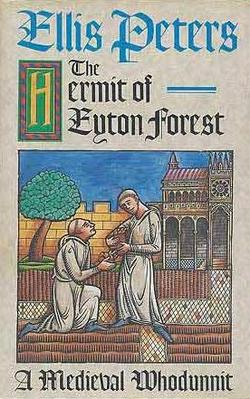
The Hermit of Eyton Forest is a medieval mystery novel by Ellis Peters, set in the autumn of 1142. It is the 14th novel in the Cadfael Chronicles and was first published in 1987.
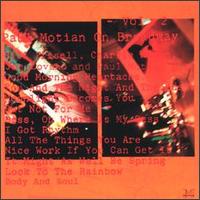
On Broadway Volume 2 is the fourth album by Paul Motian to be released on the German JMT label. It was released in 1989 and features performances of Broadway show tunes by Motian with guitarist Bill Frisell, bassist Charlie Haden and tenor saxophonist Joe Lovano. The album was followed by three subsequent volumes, and it was rereleased on the Winter & Winter label in 2003.
William FitzAlan was a Norman nobleman who lived in Oswestry and Clun, near Shrewsbury, along the medieval Welsh Marches. William was the son of William FitzAlan and Christina.
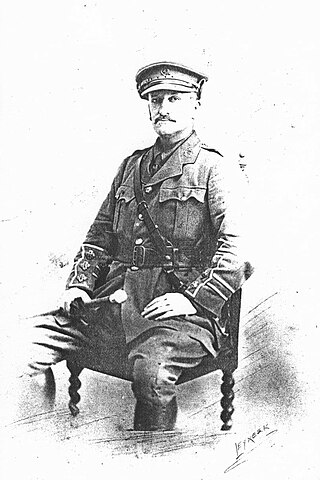
John Arthur Eyton-Jones was a Welsh footballer who played as a forward. He was part of the Wales national team between 1883 and 1884, playing four matches and scoring one goal. He played his first match on 17 March 1883 against Ireland and his last match on 29 March 1884 against Scotland.

The de Warenne family were a noble family in England that included the first Earls of Surrey, created by William the Conqueror in 1088 for William de Warenne, 1st Earl of Surrey, who was among his companions at the Battle of Hastings. The family originated in Normandy and, as Earls, held land there and throughout England. When the senior male-line ended in the mid-12th century, the descendants of their heiress adopted the Warenne surname and continue as Earls of Surrey for another two centuries. Several junior lines also held land or prominent offices in England and Normandy.

Captain Arthur David Eyton-Jones was a British Army officer with the Special Air Service (SAS) during World War II, director of a tea company, landscape gardener and chaplain. He is best known for his involvement in Operation Tombola.
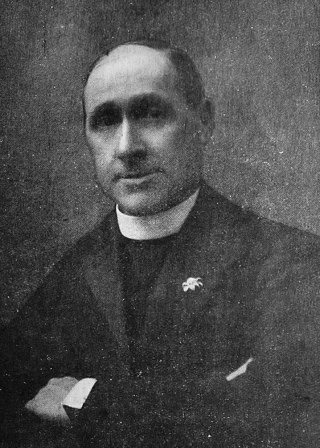
Chaplain to the Forces 1st Class, The Reverend Hugh Mortimer Eyton-Jones, MA (Cantab) was a clergyman, missionary and member of the Church Missionary Society, preaching the Gospel in Fuh Ning, China from 1889 – 1900, serving as Vicar of St. Paul's, Hounslow later in life.
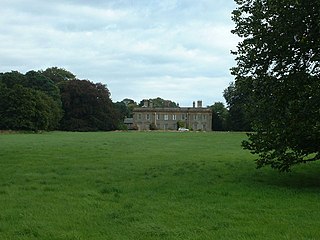
Leeswood Hall is a country house in Leeswood, Flintshire, Wales. Dating from 1742, it was built for George Wynne, the design being attributed to Francis Smith. Construction reputedly cost £40,000. The hall is a Grade II* listed building. To the northwest of the hall stand the White Gates, which have their own Grade I listing. The gates terminate the view from the hall across the lawns, an early and rare example of 18th century parkland design by Stephen Switzer, and a Grade I listed landscape of national significance.
References
- ↑
 This article incorporates text from a publication now in the public domain : "Eyton, Stephen". Dictionary of National Biography . London: Smith, Elder & Co. 1885–1900.
This article incorporates text from a publication now in the public domain : "Eyton, Stephen". Dictionary of National Biography . London: Smith, Elder & Co. 1885–1900.